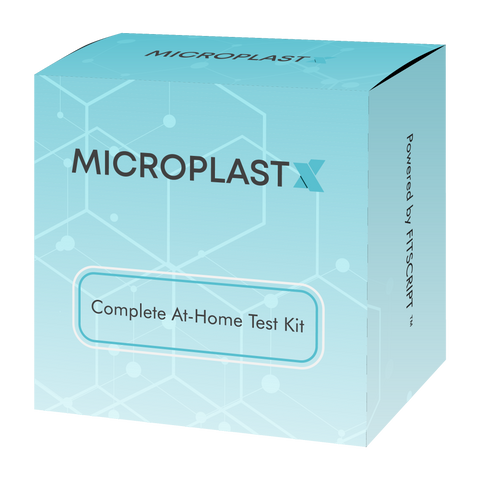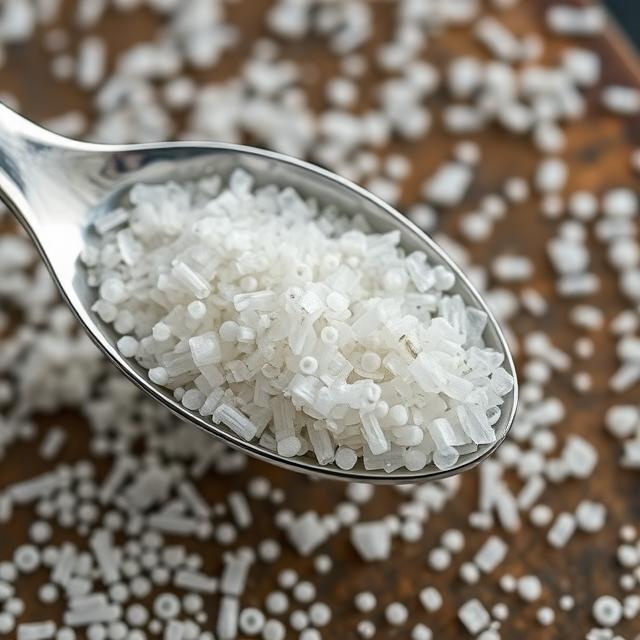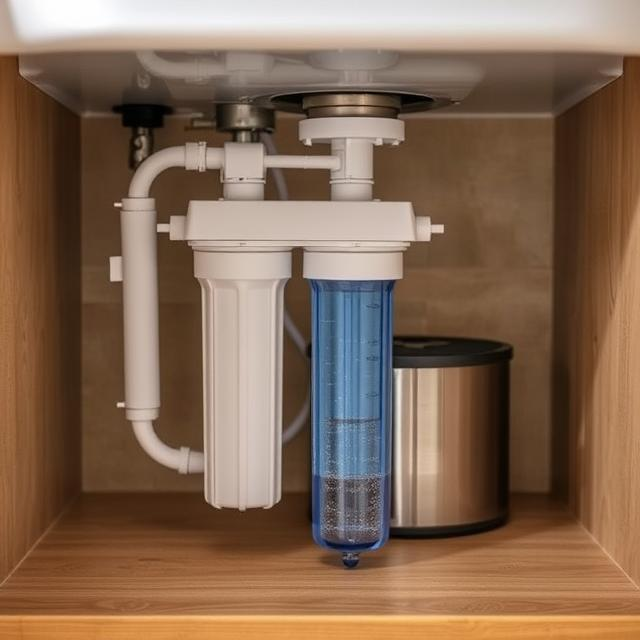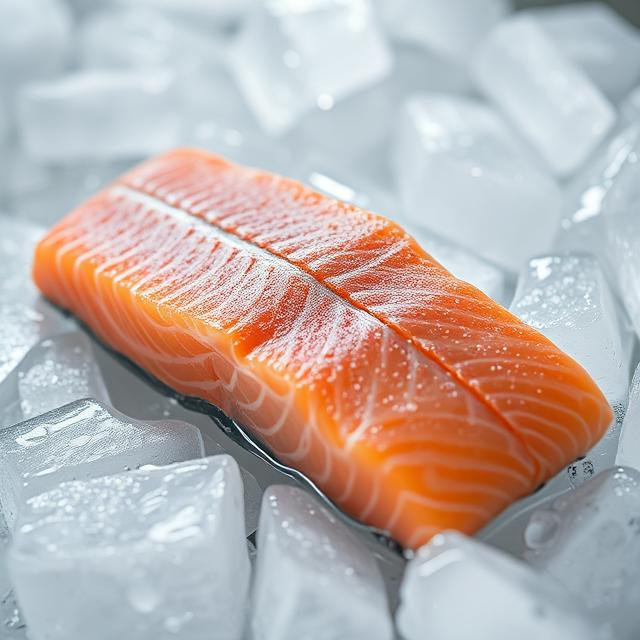What Are Microplastics in Cosmetics and Why You Should Care
Microplastics in cosmetics are small solid plastic particles added to personal care products like creams, makeup, and sunscreen. They’re used to improve texture, increase longevity, and help formulas spread smoothly on the skin. The issue is, most of us don’t even realize they’re there.
What Microplastics Are and Where They Show Up in Skincare

Cosmetic companies don’t add microplastics by mistake. They’re used to make the product perform better—feel lighter, go on smoother, or stay on longer. It’s all about the sensory feel and product behavior.
You’ll often find microplastics in:
-
Moisturizers and lotions
-
Lipsticks and lip gloss
-
BB creams and foundations
-
Face masks and cleansers
-
Waterproof mascaras and eyeliners
-
Shimmering powders and primers
These ingredients give your beauty products that soft-focus finish or velvety feel, but they also break off during application and cleansing.
What Types of Plastic Are Used in Cosmetics?
You won’t see “plastic” written on the label. Instead, companies use chemical names that sound technical or harmless. But they function the same way as plastic and don’t break down easily.
Some of the most common microplastic ingredients include:
-
Polyethylene
-
Nylon-12
-
Acrylates copolymer
-
Polymethyl methacrylate
These ingredients are solid plastic particles, added for smooth texture or thickening. Many of them are designed to rinse off, but they don’t dissolve in water. That means they go from your sink straight into the water supply.
Why You Shouldn’t Ignore What’s in Your Products
Most wastewater treatment systems can’t filter out microplastics. So after you rinse off that long-wear foundation or wash away a peel-off mask, those tiny plastic particles travel into rivers, lakes, and oceans. They’re often consumed by fish and other wildlife—and they’re making their way back to us.
There’s also growing concern that these particles may not just sit on the skin. Some research suggests they can enter the body through hair follicles or micro-abrasions. Over time, that could mean a buildup of plastic in our systems.
At MicroplastX, we created blood test kits to help you find out whether microplastics are showing up in your body. If you’ve used conventional skincare or makeup for years, there’s a chance these plastics are already circulating in your system. Knowing is the first step to doing something about it.
Microplastics in cosmetics aren’t just a trend or a buzzword. They’re in the stuff we use every day—and if we’re not paying attention, they build up without us even realizing it.
Why Brands Are Still Putting Microplastics in Beauty Products

It’s frustrating to learn that a product you trust might be doing more harm than good. But brands aren’t using microplastics just to cut corners—they use them because they make products perform exactly how customers expect.
Microplastics Make Products Perform Better
From a manufacturer’s perspective, microplastics check every box. They’re cheap, stable, and easy to work with. More importantly, they give products a smooth, luxurious feel that many customers look for.
Here’s why brands still rely on them:
-
They improve texture and smoothness
-
They help products glide evenly on the skin
-
They make makeup more resistant to sweat or water
-
They keep creams from separating or drying out
-
They help reflective powders give a “glow” or shimmer
A long-wear lipstick that doesn’t smudge? That’s likely powered by plastic polymers. A setting spray that holds your makeup through a full workday? Microplastics again.
Examples of Products Where Microplastics Are Common
You’ll find microplastics in:
-
Waterproof mascaras
-
Long-wear lipsticks
-
Anti-aging serums
-
Primers and pore-fillers
-
Exfoliating face washes
-
Tinted sunscreens
Even some “natural” or “eco” brands still use plastic-based polymers to achieve the finish and durability consumers expect. Ingredient lists may include names that don’t sound like plastic, but function exactly the same.
A report found that over 87% of top-selling beauty products still contain microplastic ingredients. That includes plenty of labels that market themselves as clean or green.
That’s one more reason MicroplastX is helping people get answers. Our blood test kits give you the ability to see if these ingredients are building up in your body. Instead of guessing based on a label, you get real results—and a clear way to take control.
What Ingredients to Watch Out for on Labels
Most people never read cosmetic ingredient lists. But when it comes to avoiding microplastics in cosmetics, reading the fine print matters. A product might look natural or clean on the front, but the ingredient list often tells a different story.
Common Microplastic Ingredients Found in Cosmetics
Microplastics don’t show up on labels under names like “plastic” or “microbeads.” Instead, they’re listed as chemical compounds or polymers that sound technical. Once you know what to look for, spotting them becomes easier.
Here are four of the most common ones you’ll find:
-
Polyethylene
-
Nylon-12
-
Acrylates copolymer
-
Polymethyl methacrylate
These ingredients are used in creams, powders, sunscreens, and a lot of long-lasting makeup. They’re added to give a smoother feel, to thicken the formula, or to help pigment last longer on your skin.
How Brands Try to Hide the Use of Microplastics
Some brands use clever wording to make products sound safer than they are. They may say “plastic-free” on the packaging, but still use synthetic polymers in the formula. Others hide microplastic ingredients behind vague names or mix them into “proprietary blends.”
There’s also a lot of greenwashing in the beauty industry. Just because a product says “natural” or “eco” doesn’t mean it’s free from plastic particles. Many brands use those terms to build trust, even if their ingredients tell a different story.
Here’s what to watch for when scanning labels:
-
Words like “copolymer” or “crosspolymer”
-
Long chemical names ending in “-ate” or “-methacrylate”
-
Ingredients near the top of the list, which means higher concentration
-
Clean branding with no real ingredient transparency
If a product isn’t crystal clear about its formula, it’s probably hiding something.
Why Checking Ingredients Isn’t Always Enough
Even if you know the names, it can be hard to tell how much exposure you’re getting. That’s why we built MicroplastX. Our blood test kits help you go beyond guessing. Instead of relying on product labels, you can find out exactly what’s in your body and how your daily routine might be affecting you.
We believe people deserve real information. Not just buzzwords and branding. If you’ve been using mainstream skincare or makeup, testing your microplastic exposure can help you make smarter choices moving forward.
Do Microplastics Actually Affect Your Skin or Health

When people hear the word microplastics, they usually think about the environment. But microplastics in cosmetics can also affect your skin and possibly your health over time. These particles don’t just sit on the surface. They can hang around longer than you think, and some of them may be absorbed into the body.
What Happens When Microplastics Stay on the Skin
Some products are designed to sit on your skin for hours, sometimes all day. Foundations, sunscreens, lipsticks, and setting sprays can all include microplastic ingredients meant to cling to the skin. But long-term exposure could do more than just coat the surface.
Plastic particles may interact with your skin in unexpected ways:
-
They can clog pores and trap bacteria
-
They may slow down the skin’s natural repair process
-
They often carry preservatives and chemicals that irritate sensitive skin
-
They could build up over time with daily use
If your skin is already sensitive or acne-prone, products with microplastics could be making it worse without you realizing it.
Can Microplastics Enter the Body Through Cosmetics
That’s the bigger concern. While most microplastics stay on the surface, smaller particles—especially nanoparticles—might get past the skin barrier. Things like shaving, exfoliating, or using active ingredients (like retinol or acids) can leave your skin more exposed.
Studies have shown that microplastics can:
-
Bind with other harmful chemicals
-
Enter the body through skin micro-tears or hair follicles
-
Potentially disrupt hormones over time
-
Trigger immune responses or inflammation
In 2022 scientists found microplastic particles in human blood for the first time. That means these particles don’t just go away. They can stay in your body and possibly build up with continued exposure.
How We Help You Find Out What’s Inside
That’s why MicroplastX created blood test kits. It’s one thing to know microplastics are in your products. It’s another thing to know whether they’re in your bloodstream.
Our testing kits make it easy to check your exposure without a lab visit or guesswork. We’ve helped people understand what’s affecting their body, especially if they’ve used cosmetics with synthetic ingredients for years. You can finally stop wondering and start acting.
When it comes to microplastics in cosmetics, the risk isn’t just about the planet. It’s about your body, your health, and your choices—and now, you have a way to get answers.
How We Help People Test for Microplastics
If you’ve been using personal care products for years, it’s likely that microplastics in cosmetics have built up in your body. Most people have no idea how much exposure they’re actually dealing with. That’s exactly why we created MicroplastX. Instead of guessing, you can use our microplastics testing kits to find out what’s really in your bloodstream.
Testing That’s Designed for Real People
We built our testing system for everyday users, not labs. You don’t need special training or medical appointments. Our kits are simple to use and designed for convenience. If you’ve ever wondered whether your makeup or skincare routine has been affecting your health, now you can check for yourself.
Here’s what makes our approach different:
-
No need for in-person lab visits
-
Fast results delivered securely
-
Easy-to-follow instructions
-
Built for everyday consumers, not just researchers
-
Backed by science and innovation
We wanted people to have access to real answers. Not just theories or assumptions. Our kits help you make informed decisions based on your actual exposure levels, not marketing claims.
Why Knowing Your Exposure Matters
It’s easy to look at ingredient lists or follow skincare trends and still not know what’s happening inside your body. Even if you start buying clean beauty products today, you might still be dealing with past buildup from years of using products full of microplastics in cosmetics.
With our microplastics testing kits at MicroplastX, you don’t have to guess. You get answers you can use to take control of your health and your habits.
People who use our testing solutions often tell us they had no idea how many plastics were circulating in their systems. Once they saw the results, they felt empowered to change their routines, switch to safer products, and even hold brands accountable.
We Make It Easy to Start
You order the kit, follow the steps, send it back, and receive your results. We explain what the findings mean and how to take the next steps if your microplastic levels are high. Whether you’re just getting into clean beauty or already deep into ingredient research, our tools can help you confirm what’s really happening.
When it comes to microplastics in cosmetics, there’s only so much you can do by reading labels. Our kits take that guesswork away and help you focus on what matters most—your health.
What to Use Instead of Products With Microplastics
Once you understand how common microplastics in cosmetics are from our microplastics testing kits at MicroplastX, the next step is figuring out what to use instead. Thankfully, there are better options. Natural ingredients can give you the same benefits without adding plastic particles to your skin or your bloodstream.
Ingredients That Work Without the Plastic
You don’t need synthetic polymers to get good results. There are natural exfoliants, binders, and thickeners that do the job just as well without the risk.
Some safe alternatives to microplastics include:
-
Jojoba beads for exfoliation
-
Bamboo powder for gentle scrubbing
-
Silica for oil control and texture
-
Plant-based waxes for smooth application
-
Natural clays and starches for thickening and stability
These ingredients don’t pollute your body or the water system. They break down naturally and are often just as effective.
Beauty Brands Doing It Right
Not every brand relies on microplastics to make their products work. Some companies are building their formulas around natural, biodegradable ingredients from the start.
Look for brands that are:
-
Transparent about every ingredient
-
Free of synthetic polymers
-
Focused on biodegradability
-
Committed to long-term sustainability
When in doubt, check the ingredient list for plastic-based names. If the brand isn’t clear or avoids answering questions, it might not be as clean as it looks. Also make sure to use a microplastic testing kit to test for them in your body.
How to Swap Products in Your Routine
You don’t need to throw everything away all at once. Start by switching out the products you use the most or those that sit on your skin the longest.
Try these swaps:
-
Replace your daily moisturizer with a natural oil or cream
-
Switch to a physical exfoliator without synthetic beads
-
Use powder-based makeup with clean ingredients
-
Choose sunscreen made with zinc or titanium rather than plastic binders
-
Try lip balms and glosses made from beeswax or shea butter
These changes might seem small, but they make a big impact over time.
As more people become aware of the issues with microplastics in cosmetics, demand for safer options is growing. But until the industry shifts, it’s up to you to make smart choices—and we’re here to help. With tools like our microplastics testing kits from MicroplastX, you’ll know which swaps are working and how your exposure is changing over time.
The future of skincare doesn’t need plastic. It just needs better decisions—and the right tools to back them up.




